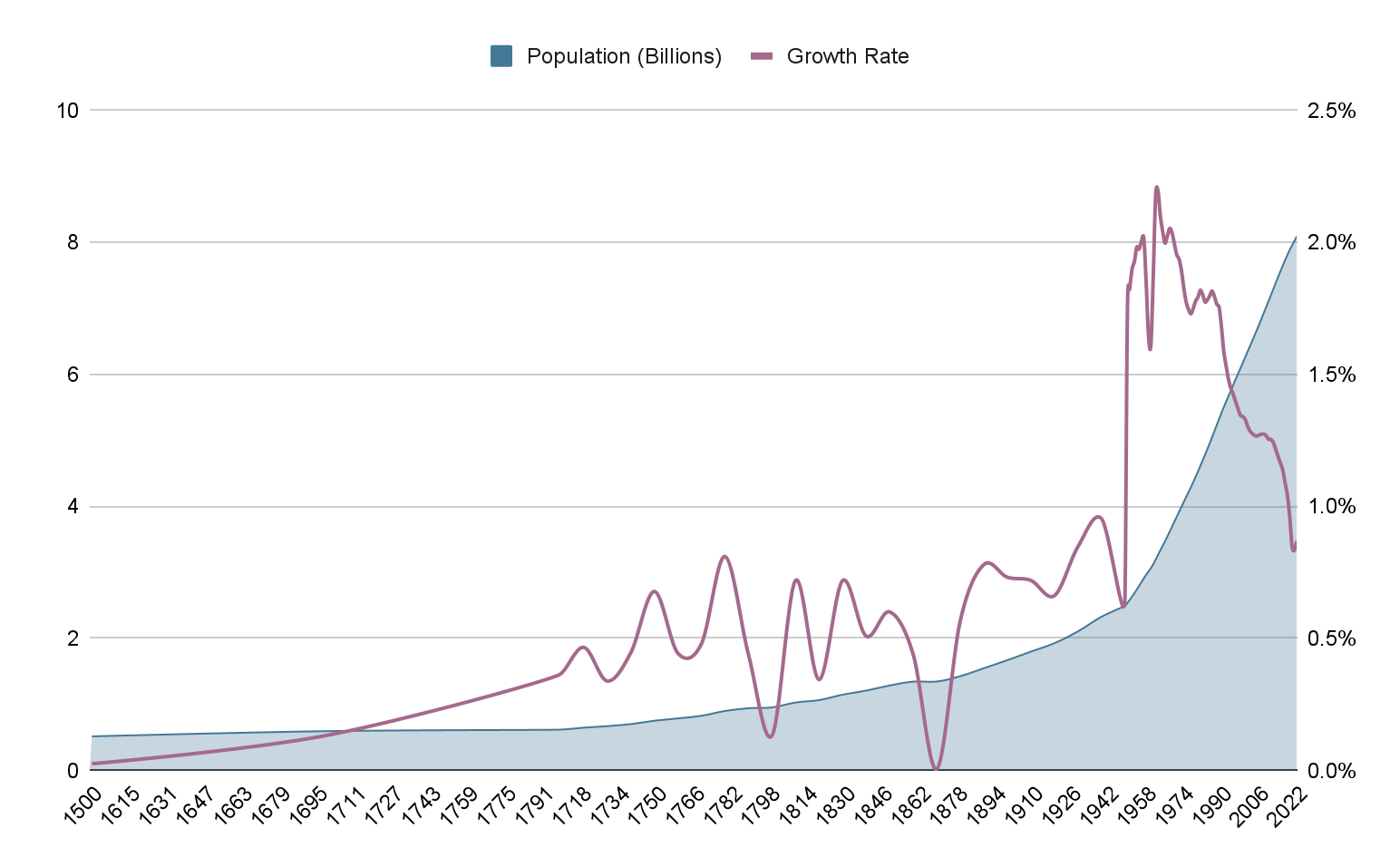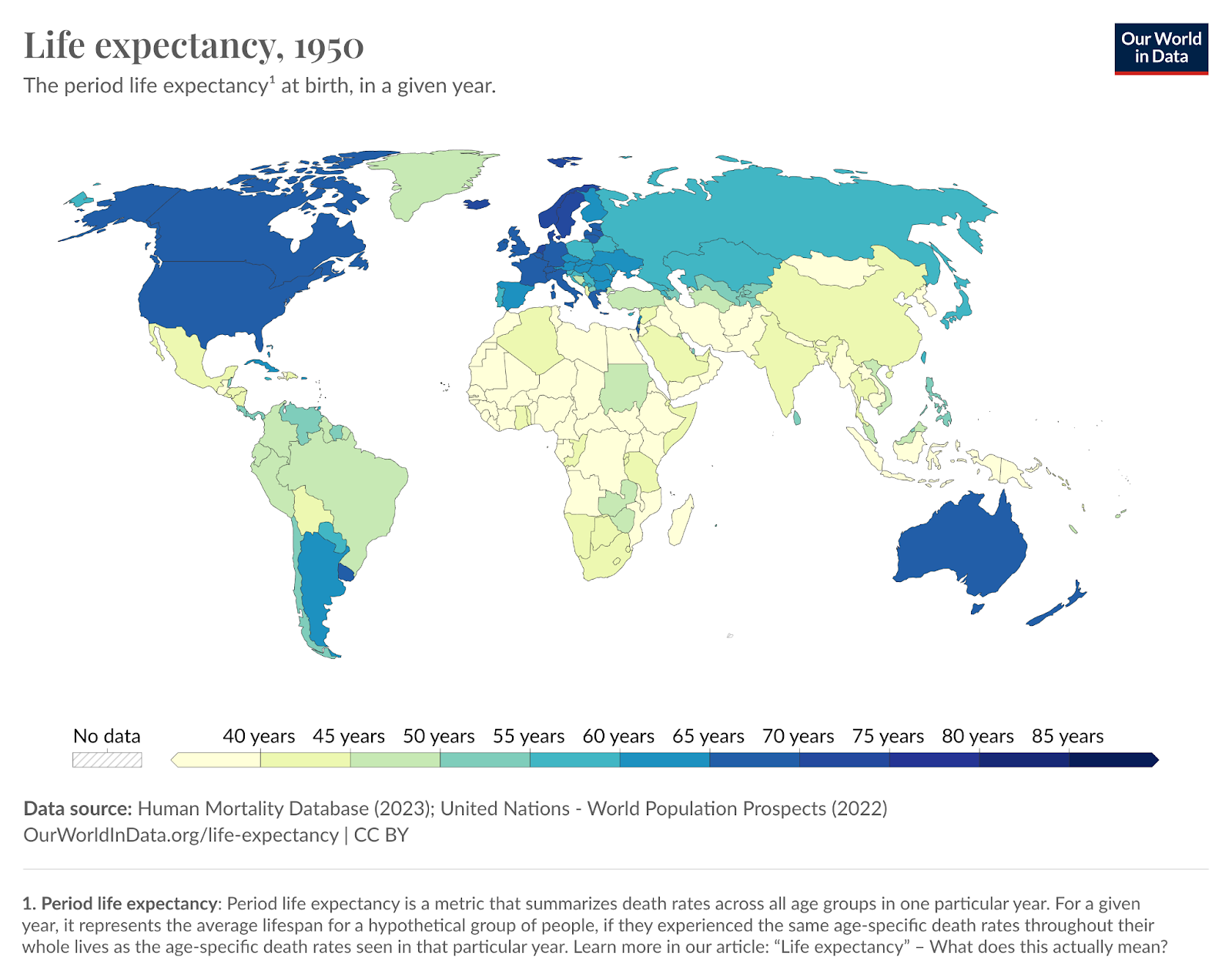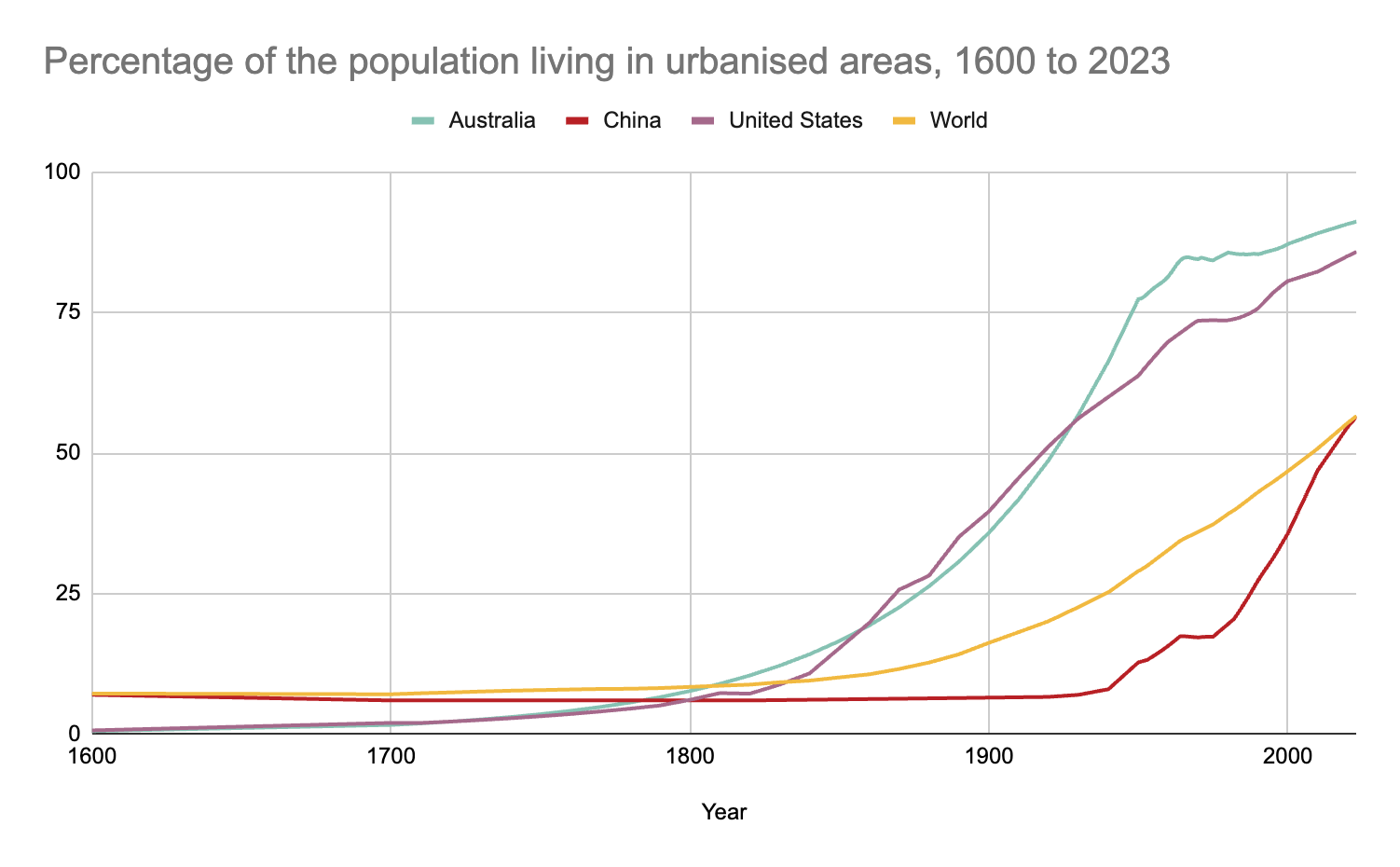
About Our World in Data
Our World in ’s mission is “to publish research and data to make progress against the world’s largest problems”. It makes data and knowledge accessible and understandable to empower those working to build a better world. Read more about Our World in Data’s mission on the problems and progress .
Available topics and data
The site provides data across a broad range of topics, grouped under sections:
- Population and Demographic Change
- Health
- Energy and Environment
- Food and Agriculture
- Poverty and Economic Development
- Education and Knowledge
- Innovation and Technological Change
- Living Conditions, Community and Wellbeing
- Human Rights and Democracy
- Violence and War
Each group has a link to topics, which include key insights, information, interactive charts and data sets, links to articles and research among others. For example the Population and Demographic Change group includes the following topics:
Population and demographic trends
The site provides a truly vast amount of information, so much so that you may think — what can I do with all this information? To break it down a bit, the site can be seen as a source of raw data sets with which visitors can conduct their own focused analysis on their topic of interest as well as a source of some very interesting key insights and pre-prepared analyses. In this article we’ll look at a couple of examples of both. We’ll look at three main topics; population growth, life expectancy and urbanisation.
Global population growth and rate of change
Population growth on our planet changed gear around 1800, when the estimated population was around one billion people. It now stands at over 8 , approximately a 700% increase. This huge increase was due to a number of factors including industrialisation and improvements in medical knowledge and public health, along with more regular food supply, a dramatic reduction in the death rate and no corresponding decline in the birth rate.
However, population growth is no longer exponential. Growth rates peaked in the 1960s and have been declining since. The chart below illustrates this, with the purple line showing a sharp decline, after peaking in the 1960s. In fact, the UN predicts that the global population will peak by the end of this century at around 10.4 billion .
Global life expectancy — 1900 to 2021
One significant contributing factor to population growth is life expectancy. It’s hard to believe but around 1900, the average life expectancy of a newborn was 32 years, with infant mortality rates being much higher than they are today. By 2021 life expectancy had more than doubled to 71 years. This resource delves into the where, when, how, and why has this dramatic change in life expectancy .
Some additional key insights in this topic area include:
- There are vast differences in life expectancy around the world
- For example, in 2021, life expectancy in Nigeria and other parts of Africa was 30 years lower than in Japan.
- In 1950 the variations across and even within the continents of the world were enormous
- For example in the United States it was 68.2 years, while in India it was 41.7 and in Mali only 28.2 years.
Urbanisation across the world today
On the scale of human history, urbanisation is a relatively new phenomenon. In the early 1800s the majority (around 90%) of the global population lived in rural . As can be seen in the chart below, the percentage of populations living in urban areas began to increase steeply from around 1850, albeit at quite different rates across different countries and regions. Currently more than half of the world’s population live in urban areas and increasingly in high-density cities. A sad, related fact is that almost 1-in-4 of those urban inhabitants live in slum household .
Source: HYDE (2023) – Learn more about this data OurWorldInData.org/urbanization | CC BY - Long-run history of
Data section
This section of the site provides some pre-curated bite-sized insights across a very broad range of topics. Below we’ve listed a selection of interesting topics:
- COVID-19 was the third largest cause of death in
- Life expectancy is lower in the United States than in other high-income
- More countries have legalised same-sex marriage, but others have explicitly banned
- Indoor air pollution causes over three million premature deaths every
- Solar panel prices have fallen by around 20% every time global capacity
- The price of lighting has dropped over 99.9% since
- Which countries have fertility rates above or below the “replacement
More about Our World in Data
For more information on Our World in Data’s mission or to explore the vast range of data available visit , choose a topic of interest and dive in. Curated Daily Data are also available and regularly updated.




